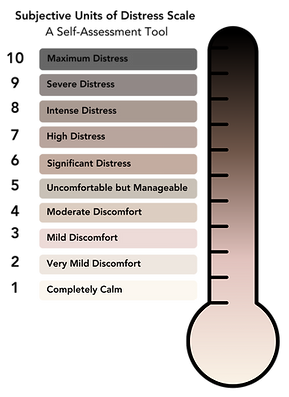
DID YOU KNOW?
After just one EFT session, 90% of individuals experienced reduced anxiety.*
DID YOU KNOW?
One study showed that 86% of participants no longer met clinical PTSD criteria after six EFT sessions.**
DID YOU KNOW?
Did You Know? Emotional Freedom Technique (EFT) can improve sleep quality by up to 73.3% for people struggling with insomnia!***
DID YOU KNOW?
Did You Know? Emotional Freedom Technique (EFT) can reduce cravings by 74%****
All About Tapping
Looking for a way to ease stress, calm your emotions, and restore balance in minutes? Welcome to Tapping, or Emotional Freedom Techniques (EFT). Here, you’ll learn what tapping is, how it works, and why it can unlock both emotional and physical well-being.
What is Tapping?
Tapping is a blend of ancient practices and modern psychology. By gently tapping specific points on your body while focusing on an issue or emotion, you can relieve stress and emotional discomfort. These points align with acupuncture meridians, yet there are no needles, just your fingertips.
Tapping helps reset your body’s energy system and clear emotional blockages. From anxiety and stress to physical pain or negative beliefs, this technique offers a practical way to let go and heal.
Why Does Tapping Work?
Though simple, tapping delivers meaningful results, supported by growing research:
-
Interrupts stress: Calms your nervous system and reduces anxiety.
-
Rewires patterns: Changing focus as you tap helps untangle unhelpful thoughts.
-
Mind-body connection: Addresses both emotional and physical sensations for holistic relief.
Many people experience relief, clarity, and empowerment after just a few rounds.
What Makes Tapping Accessible?
Tapping is easy, requires no special tools, and can be done anywhere.
-
Versatile: Helps with emotional and physical challenges, from anxiety to chronic pain.
-
Inclusive: All ages and backgrounds can benefit; it’s safe and non-invasive.
-
Empowering: Once you learn it, you have it for life.
The Transformative Power of Tapping
Imagine facing life with less stress and more peace. Tapping helps people around the world overcome difficulties and grow in confidence. Why not see what it can do for you?
Are you ready to discover how tapping can transform your life? Whether you're seeking emotional relief, building healthier habits, or finding greater balance, EFT can help you unlock new possibilities.
Start with the Tapping Basics to learn the foundations, and explore guided tapping sessions to deepen your practice. Your journey to emotional freedom begins today—start tapping now!
Give EFT Tapping a Try...
Even If It Feels a Little Goofy
Can looking a bit silly actually bring real relief? Oh, absolutely.
Let’s be honest - Tapping feels a little odd at first. You’re literally tapping on your face and body while saying phrases out loud. Not exactly your go-to stress fix, right? But here’s the kicker: you don’t have to believe in it for it to work.
When I was battling agoraphobia, I told a practitioner I’d stand on my head and cluck like a chicken if it meant finding relief. Thankfully, EFT doesn’t require poultry impressions, just a willingness to give it a shot. And trust me, the results speak for themselves.
Start Small, Feel Big Results
Tapping is perfect for tackling those everyday stresses that pile up during a hectic day. It’s quick, simple, and surprisingly effective at dialing down emotional intensity. Pro tip: If you’re new to EFT, don’t dive into the deep end. Start with smaller stressors, rate them on a scale of 1 to 10 and stick to ones that are a 5 or 6. It’s enough to feel a shift without feeling overwhelmed. As you get the hang of it, you’ll be ready to tackle the bigger stuff.
Need a Hand? I’ve Got You Covered
To make it even easier, I’ve created a beginner-friendly playlist designed to help you shake off the stress of a tough day. You can check it out here: www.youtube.com/@EFT_TapOnThat.
And if you ever feel overwhelmed mid-session, I’ve got a quick tapping round to help you ground yourself and find relief fast. You can find it here: www.youtube.com/@EFT_TapOnThat.
Sure, tapping your forehead might feel a little goofy at first, but the relief? That’s no joke. Why not give it a try? Your stress doesn’t stand a chance.
.png)
Tapping is a gentle and effective technique. As you begin your journey with Emotional Freedom Techniques and develop confidence in reducing emotional intensity, it’s best to start with issues that have a Subjective Units of Distress (SUD) level of 5 or lower. Despite our best efforts to avoid overwhelming emotions, sometimes unexpected feelings surface, leaving us feeling unsettled. If you find yourself struggling to manage your emotional intensity, here are two valuable resources to help you regain balance and control.
A guided tapping session, and a meditation.
*A study published in the Journal of Nervous and Mental Disease found that EFT significantly reduced anxiety levels in participants. After just one session, 90% of individuals experienced reduced anxiety, compared to 63% in the cognitive-behavioral therapy (CBT) group. (Source: Journal of Nervous and Mental Disease, 2012) and https://pmc.ncbi.nlm.nih.gov/articles/PMC6381429/
** Veterans suffering from PTSD who participated in EFT sessions demonstrated remarkable improvements. One study showed that 86% of participants no longer met clinical PTSD criteria after six EFT sessions. (Source: Energy Psychology Journal, 2013) and https://pmc.ncbi.nlm.nih.gov/articles/PMC5499602/
*** For Insomnia: A randomized controlled study demonstrated that EFT significantly reduced insomnia severity, improved sleep quality, and decreased sleepiness. The study reported significant improvements in the Insomnia Severity Index (t=6.732, p=0.001), Epworth Sleepiness Scale (t=2.16, p=0.034), and Pittsburgh Sleep Quality Index (t=3.934, p=0.001). https://pmc.ncbi.nlm.nih.gov/articles/PMC9020420/
**** 4-day training workshop held in different locations. At one workshop (n = 31), participants also received comprehensive physiological testing... cravings (−74%), all P < .000. Happiness increased (+31%, P = .000) as did SigA (+113%, P = .017). Significant improvements were found in RHR (−8%, P = .001), cortisol (−37%, P < .000), systolic BP (−6%, P = .001), and diastolic BP (−8%, P < .000). https://pmc.ncbi.nlm.nih.gov/articles/PMC6381429/








